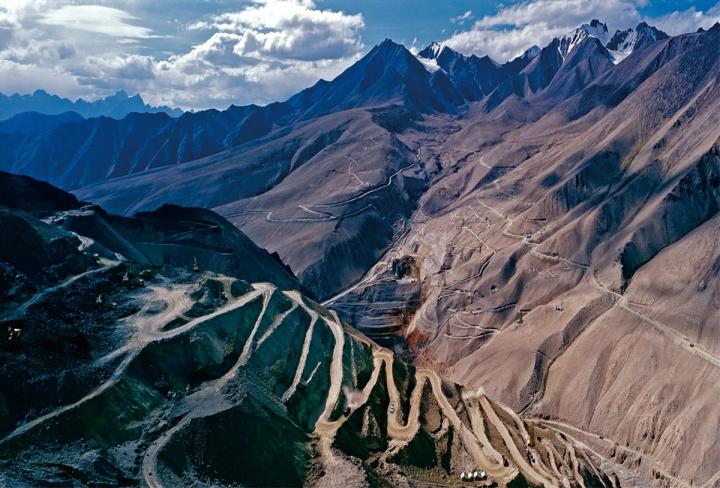Scientists discover Earth's youngest banded iron formation in western China

Earth's youngest banded iron formation in western China. Credit: Zhiquan Li
The banded iron formation, located in western China, has been conclusively dated as Cambrian in age. Approximately 527 million years old, this formation is young by comparison to the majority of discoveries to date.
The deposition of banded iron formations, which began approximately 3.8 billion years ago, had long been thought to terminate before the beginning of the Cambrian Period at 540 million years ago.
“This is critical, as it is the first observation of a Precambrian-like banded iron formation that is Early Cambrian in age. This offers the most conclusive evidence for the presence of widespread iron-rich conditions at a time, confirming what has recently been suggested from geochemical proxies,” said Kurt Konhauser, professor in the Department of Earth and Atmospheric Sciences and co-author. Konhauser supervised the research that was led by Zhiquan Li, a PhD candidate from Beijing while on exchange at UAlberta.
The Early Cambrian is known for the rise of animals, so the level of oxygen in seawater should have been closer to near modern levels. “This is important as the availability of oxygen has long been thought to be a handbrake on the evolution of complex life, and one that should have been alleviated by the Early Cambrian,” says Leslie Robbins, a PhD candidate in Konhauser's lab and a co-author on the paper.
The researchers compared the geological characteristics and geochemistry to ancient and modern samples to find an analogue for their deposition. The team relied on the use of rare earth element patterns to demonstrate that the deposit formed in, or near, a chemocline in a stratified iron-rich basin.
“Future studies will aim to quantify the full extent of these Cambrian banded iron formations in China and whether similar deposits can be found elsewhere,” says Kurt Konhauser.
###
The paper, “Earth's youngest banded iron formation implies ferruginous conditions in the Early Cambrian ocean,” was published in Scientific Reports (doi: 10.103841598-018-28187-2).
Media Contact
All latest news from the category: Earth Sciences
Earth Sciences (also referred to as Geosciences), which deals with basic issues surrounding our planet, plays a vital role in the area of energy and raw materials supply.
Earth Sciences comprises subjects such as geology, geography, geological informatics, paleontology, mineralogy, petrography, crystallography, geophysics, geodesy, glaciology, cartography, photogrammetry, meteorology and seismology, early-warning systems, earthquake research and polar research.
Newest articles

A universal framework for spatial biology
SpatialData is a freely accessible tool to unify and integrate data from different omics technologies accounting for spatial information, which can provide holistic insights into health and disease. Biological processes…

How complex biological processes arise
A $20 million grant from the U.S. National Science Foundation (NSF) will support the establishment and operation of the National Synthesis Center for Emergence in the Molecular and Cellular Sciences (NCEMS) at…

Airborne single-photon lidar system achieves high-resolution 3D imaging
Compact, low-power system opens doors for photon-efficient drone and satellite-based environmental monitoring and mapping. Researchers have developed a compact and lightweight single-photon airborne lidar system that can acquire high-resolution 3D…





















